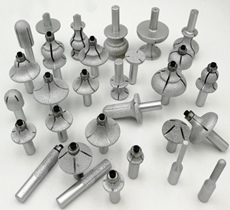Customer Case of Vacuum Grinding Wheel for Grey and Nodular Cast Parts Processing By Robot Arm
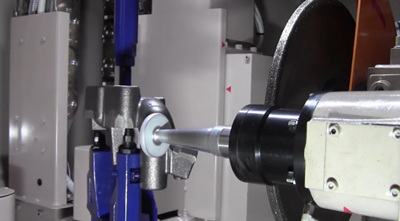
1. Machine : Koyama 400
2. Workpiece material: Grey and nodular cast GG100-200 in GGG400-600
3. Workpiece: different cast parts
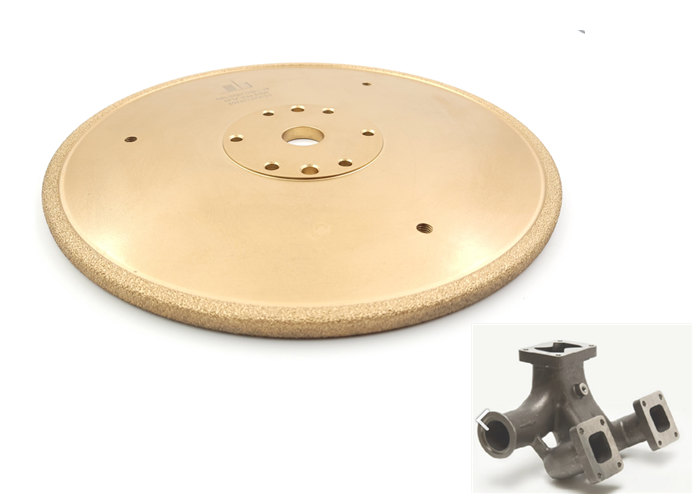
4. Wheel size: D:355-T:12-H:31,75
5. Grit: 20/30
6. Grinding by robot arm
In the field of precision machining, grey and nodular cast iron parts are commonly used due to their excellent mechanical properties, such as high wear resistance and good machinability. However, these materials also present challenges during processing, particularly when high precision and surface finish are required. Vacuum brazed grinding wheels, operated by robotic arms, offer a cutting-edge solution to these challenges, providing significant advantages in processing grey and nodular cast iron parts.
Advantages of Using Vacuum Brazed Grinding Wheels

1. High Cutting Efficiency: Vacuum brazed grinding wheels have a single-layer diamond or CBN abrasive that is strongly bonded to the wheel surface. This design allows for highly efficient material removal, reducing processing time while maintaining precision.
2. Extended Wheel Life: The robust bonding of abrasives in vacuum brazed grinding wheels results in a longer tool life compared to traditional grinding wheels. This longevity translates into reduced tooling costs and less frequent wheel changes.
3. Excellent Surface Finish: These grinding wheels produce a superior surface finish on grey and nodular cast parts. The precision of the brazed abrasives ensures minimal chipping and a smoother surface, which is crucial for parts that require high tolerances.
4. Reduced Heat Generation: The efficient cutting action of vacuum brazed wheels minimizes friction, thereby reducing heat generation during grinding. This is particularly important for cast iron parts, as excessive heat can lead to thermal damage or warping.
5. Versatile Application: Vacuum brazed grinding wheels are versatile and can be used for a wide range of applications, including rough grinding, precision finishing, and contouring. This versatility makes them suitable for various stages of grey and nodular cast iron part processing.
Applications of Vacuum Brazed Grinding Wheels
1. Automotive Industry: Grey and nodular cast iron parts are widely used in the automotive industry for components such as engine blocks, brake discs, and transmission cases. Vacuum brazed grinding wheels provide the precision and efficiency needed to meet the stringent quality standards in automotive manufacturing.
2. Aerospace Industry: In aerospace applications, where high strength and precision are required, vacuum brazed grinding wheels are ideal for machining cast iron parts. These wheels ensure a high-quality finish, essential for components subjected to extreme conditions.
3. Heavy Machinery: The processing of large cast iron parts in heavy machinery requires tools that can handle substantial material removal while maintaining accuracy. Vacuum brazed grinding wheels, especially when used with robotic arms, can efficiently process these large parts with consistent results.
Processing Methods with Robotic Arms
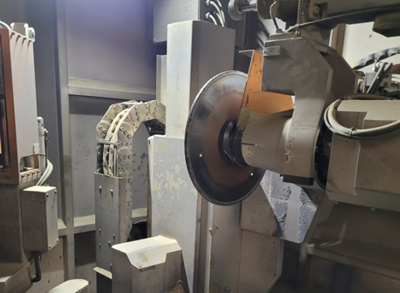
1. Automated Precision Grinding: When paired with robotic arms, vacuum brazed grinding wheels can achieve high-precision grinding with consistent force and speed. Robotic arms can be programmed to follow complex paths, ensuring that even intricate cast parts are machined to exact specifications.
2. Adaptive Control Systems: Modern robotic arms equipped with adaptive control systems can adjust the grinding parameters in real time based on feedback from the grinding process. This capability ensures optimal performance and prevents overloading or damaging the cast parts.
3. Continuous Operation: The integration of robotic arms allows for continuous operation, which is particularly beneficial in high-volume production environments. This automation reduces downtime and increases overall productivity, making it a cost-effective solution for processing cast iron parts.
Conclusion of Vacuum Grinding Wheel for Grey and Nodular Cast Parts Processing By Robot Arm
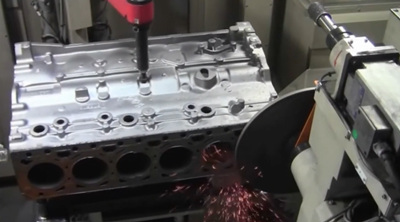
Vacuum brazed grinding wheels, when used in conjunction with robotic arms, offer significant advantages in the processing of grey and nodular cast iron parts. Their high cutting efficiency, extended wheel life, excellent surface finish, and reduced heat generation make them an ideal choice for industries requiring precision machining. The versatility and adaptability of these tools in various applications underscore their value in modern manufacturing, particularly in the automotive, aerospace, and heavy machinery sectors. As automation continues to advance, the use of vacuum brazed grinding wheels in robotic applications will likely become even more prevalent, driving further improvements in efficiency and quality in cast iron part processing.







_.jpg)
